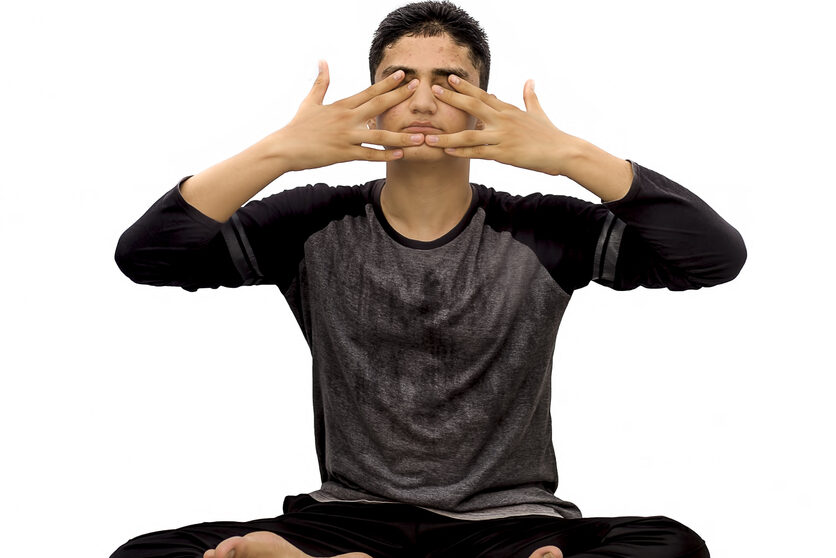1. Diaphragmatic Breathing (Also Called Belly Breathing)

This technique activates your body’s natural relaxation system by promoting full oxygen exchange. Unlike shallow chest breathing, it engages the diaphragm, so you breathe deeper. Inhale slowly through your nose and feel your belly rise, then exhale through your mouth and feel it fall. Doing this for just five minutes can calm your nervous system, reduce anxiety, and stabilize your mood quickly, especially when practiced regularly.
It’s particularly effective during panic episodes or when emotions feel overwhelming. Studies from Harvard Medical School show it slows your heart rate and may lower blood pressure. Practicing while lying down or sitting comfortably helps your body relax and your mind to reset. Try it in the morning, during breaks, or at bedtime. It works like a mental and emotional reboot, helping you feel more grounded and in control even when life feels overwhelming.
2. Box Breathing (Used by Navy SEALs)
Box breathing helps you stay calm and alert under pressure by creating a simple, repeatable rhythm. Breathe in for four seconds, hold your breath for four, exhale for four, and hold again for four. This creates a mental square to trace in your mind as you breathe. It’s a go-to technique for people who need to stay clear-headed in stressful moments like public speaking or decision-making.
This method is also used by Navy SEALs and first responders because it builds mental focus and emotional control. Studies from the Cleveland Clinic confirm it helps lower stress and anxiety by balancing oxygen levels and stimulating the parasympathetic nervous system. You can use it before meetings, during tense conversations, or to unwind before sleep. It’s one of the easiest ways to pause, gather your thoughts, and respond with calm and intention.
3. 4-7-8 Breathing (Natural Sedative Effect)
The 4-7-8 technique works like a natural sedative for the body and brain. Inhale through your nose for four seconds, hold for seven, and exhale through your mouth for eight. This rhythm forces your body to slow down, making it perfect for stress relief, falling asleep, or easing anxiety attacks. It’s easy to learn and surprisingly powerful, even though it seems simple at first.
Research shows this breathing pattern reduces your body’s stress response by lowering heart rate and calming the nervous system. According to the Journal of Clinical Psychology, it’s especially effective for emotional regulation and quieting racing thoughts. Many people use it to unwind after work or settle down before bed. Practicing this for just a few minutes each day can lead to better sleep, improved emotional control, and sharper focus throughout your day.
4. Alternate Nostril Breathing (Nadi Shodhana)

Rooted in ancient yogic practice, alternate nostril breathing balances both sides of the brain and body. To try it, close your right nostril and inhale through your left. Then close the left nostril and exhale through your right. Repeat the process by switching nostrils each cycle. This method can be deeply relaxing and helps you regain focus when your mind feels scattered or overstimulated.
Scientific studies, show this method lowers heart rate, reduces anxiety, and improves concentration. It also encourages synchronization of brain hemispheres, enhancing calm and mental clarity. You can use this technique before meetings, while transitioning between tasks, or when managing high-stress situations. Just five minutes of mindful practice can offer real mental clarity and a grounded sense of well-being to help you move through your day.
5. Resonance Breathing (Coherent Breathing)
Resonance breathing, also known as coherent breathing, encourages you to breathe at a rate of five full breaths per minute. That means inhaling for about six seconds and exhaling for another six. The goal is to slow down your breath rhythm enough that your heart rate and breathing work together, creating a state of calm alertness that supports mental and physical balance.
According to research, this breathing technique improves heart rate variability, supports mental health, and enhances focus. It’s often used with biofeedback therapy to manage anxiety, PTSD, and burnout. Apps like Breathwrk or Insight Timer offer helpful guides to keep you on track. Once practiced, it becomes a powerful daily habit. It’s like meditation in motion, calming your system and giving you more emotional resilience with each breath.
6. Humming Breath (Bhramari)

Humming breath, or Bhramari, combines breath and gentle sound to calm the nervous system. Inhale deeply through your nose, then hum while exhaling. The vibration creates a soothing effect, quiets inner chatter, and helps you tune into your body. It’s especially helpful if you tend to hold your breath during stress or spiral into anxious thoughts that are hard to quiet.
This technique stimulates the vagus nerve, which plays a key role in calming the body’s stress response. Neuroscience studies show it also boosts nitric oxide in the sinuses, improving oxygen flow and lifting mood. Practicing this in a quiet space with your eyes closed can leave you feeling grounded, less reactive, and more at peace. It’s a gentle, easy technique that doesn’t require experience. Perfect for when you want something calming and simple you can do anytime.
